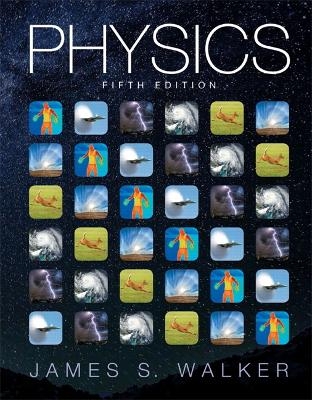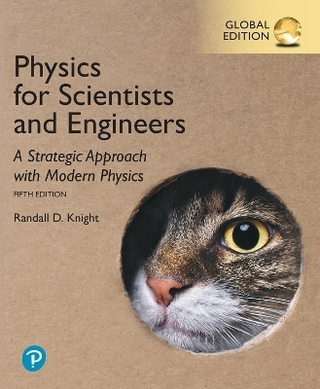
Quantum Theory of Optical Coherence – Selected Papers and Lectures
Wiley-VCH Verlag GmbH (Hersteller)
978-3-527-61007-5 (ISBN)
- Keine Verlagsinformationen verfügbar
- Artikel merken
A summary of the pioneering work of Glauber in the field of optical coherence phenomena and photon statistics, this book describes the fundamental ideas of modern quantum optics and photonics in a tutorial style. It is thus not only intended as a reference for researchers in the field, but also to give graduate students an insight into the basic theories of the field. Written by the Nobel Laureate himself, the concepts described in this book have formed the basis for three further Nobel Prizes in Physics within the last decade.
Roy J. Glauber, born 1925 in New York City, was a student in the 1941 graduating class at the Bronx High School of Science. He worked on the Manhattan Project for two years before obtaining his bachelor's degree and then went on to obtain a Ph.D. from Harvard University, where he is now the Mallinckrodt Professor of Physics while also being an Adjunct Professor of Optical Sciences at the University of Arizona. Professor Glauber was awarded the 2005 Nobel Prize in Physics "for his contribution to the quantum theory of optical coherence", together with John L. Hall and Theodor W. Hansch. His groundbreaking research on optical coherence was published in 1963. The most famous contribution of Professor Glauber to physics is the notion and mathematics behind coherent states.
1 The Quantum Theory of Optical Coherence.1.1 Introduction.1.2 Elements of Field Theory.1.3 Field Correlations.1.4 Coherence.1.5 Coherence and Polarization.2 Optical Coherence and Photon Statistics.2.1 Introduction.2.1.1 Classical Theory.2.2 Interference Experiments.2.3 Introduction of Quantum Theory.2.4 The One-Atom Photon Detector.2.5 The n-Atom Photon Detector.2.6 Properties of the Correlation Functions.2.6.1 Space and Time Dependence of the Correlation Functions.2.7 Diffraction and Interference.2.7.1 Some General Remarks on Interference.2.7.2 First-Order Coherence.2.7.3 Fringe Contrast and Factorization.2.8 Interpretation of Intensity Interferometer Experiments.2.8.1 Higher Order Coherence and Photon Coincidences.2.8.2 Further Discussion of Higher Order Coherence.2.8.3 Treatment of Arbitrary Polarizations.2.9 Coherent and Incoherent States of the Radiation Field.2.9.1 Introduction.2.9.2 Field-Theoretical Background.2.9.3 Coherent States of a Single Mode.2.9.4 Expansion of Arbitrary States in Terms of Coherent States.2.9.5 Expansion of Operators in Terms of Coherent State Vectors.2.9.6 General Properties of the Density Operator.2.9.7 The P Representation of the Density Operator.2.9.8 The Gaussian Density Operator.2.9.9 Density Operators for the Field.2.9.10 Correlation and Coherence Properties of the Field.2.10 Radiation by a Predetermined Charge-Current Distribution.2.11 Phase-Space Distributions for the Field.2.11.1 The P Representation and the Moment Problem.2.11.2 A Positive-Definite "Phase Space Density".2.11.3 Wigner's "Phase Space Density".2.12 Correlation Functions and Quasiprobability Distributions.2.12.1 First Order Correlation Functions for Stationary Fields.2.12.2 Correlation Functions for Chaotic Fields.2.12.3 Quasiprobability Distribution for the Field Amplitude.2.12.4 Quasiprobability Distribution for the Field Amplitudes at Two Space-Time Points.2.13 Elementary Models of Light Beams.2.13.1 Model for Ideal Laser Fields.2.13.2 Model of a Laser Field With Finite Bandwidth.2.14 Interference of Independent Light Beams.2.15 Photon Counting Experiments.References.3 Correlation Functions for Coherent Fields.3.1 Introduction.3.2 Correlation Functions and Coherence Conditions.3.3 Correlation Functions as Scalar Products.3.4 Application to Higher Order Correlation Functions.3.5 Fields With Positive-Definite P Functions.References.4 Density Operators for Coherent Fields.4.1 Introduction.4.2 Evaluation of the Density Operator.4.3 Fully Coherent Fields.4.4 Unique Properties of the Annihilation Operator Eigenstates.5 Classical Behavior of Systems of Quantum Oscillators.6 Quantum Theory of Parametric Amplification I.6.1 Introduction.6.2 The Coherent States and the P Representation.6.3 Model of the Parametric Amplifier.6.4 Reduced Density Operator for the A Mode.6.5 Initially Coherent State: P Representation for the A Mode.6.6 Initially Coherent State; Moments, Matrix Elements, and Explicit Representation for pA(t).6.7 Solutions for an Initially Chaotic B Mode.6.8 Solution for Initial n-Quantum State of A Mode; B Mode Chaotic.6.9 General Discussion of Amplification With B Mode Initially Chaotic.6.10 Discussion of P Representation: Characteristic Functions Initially Gaussian.6.11 Some General Properties of P(alpha, t).7 Quantum Theory of Parametric Amplification II.7.1 Introduction.7.2 The Two-Mode Characteristic Function.7.3 The Wigner Function.7.4 Decoupled Equations of Motion.7.5 Characteristic Functions Expressed in Terms of Decoupled Variables.7.6 W and P Expressed in Terms of Decoupled Variables.7.7 Results for Chaotic Initial States.7.8 Correlations of the Mode Amplitudes.References.8 Photon Statistics.8.1 Introduction.8.2 Classical Theory.8.3 Quantum Theory: Introduction.8.4 Intensity and Coincidence Measurements.8.5 First and Higher Order Coherence.8.6 The Coherent States.8.7 Expansions in Terms of the Coherent States.8.8 Characteristic Functions and Quasiprobability Densities.8.9 Some Examples.8.10 Photon Counting Distributions.9 Ordered Expansions in Boson Amplitude Operators.9.1 Introduction.9.2 Coherent States and Displacement Operators.9.3 Completeness of Displacement Operators.9.4 Ordered Power-Series Expansions.9.5 s-Ordered Power-Series Expansions.9.6 Integral Expansions for Operators.9.7 Correspondences Between Operators and Functions .9.8 Illustration of Operator-Function Correspondences.10 Density Operators and Quasiprobability Distributions.10.1 Introduction.10.2 Ordered Operator Expansions.10.3 The P Representation.10.4 Wigner Distribution.10.5 The Function (alpha, p, alpha) . 10.6 Ensemble Averages and s Ordering.10.7 Examples of the General Quasiprobability Function W (alpha, s). 10.8 Analogy with Heat Diffusion.10.9 Time-Reversed Heat Diffusion and W (alpha, s).10.10 Properties Common to all Quasiprobability Distributions.11 Coherence and Quantum Detection.11.1 Introduction.11.2 The Statistical Properties of the Electromagnetic Field.11.3 The Ideal Photon Detector.11.4 Correlation Functions and Coherence.11.5 Other Correlation Functions.11.6 The Coherent States.11.7 Expansions in Terms of Coherent States.11.8 A Few General Observations.11.9 The Damped Harmonic Oscillator.11.10 The Density Operator for the Damped Oscillator.11.11 Irreversibility and Damping.11.12 The Fokker-Planck and Bloch Equations.11.13 Theory of Photodetection. The Photon Counter Viewed as a Harmonic Oscillator.11.14 The Density Operator for the Photon Counter.12 Quantum Theory of Coherence.12.1 Introduction.12.2 Classical Theory.12.3 Quantum Theory.12.4 Intensity and Coincidence Measurements.12.5 Coherence.12.6 Coherent States.12.7 The P Representation.12.8 Chaotic States.12.9 Wavepacket Structure of Chaotic Field.13 The Initiation of Superfluorescence.13.1 Introduction.13.2 Basic Equations for a Simple Model.13.3 Onset of Superfluorescence.14 Amplifiers, Attenuators and Schr odingers Cat.14.1 Introduction: Two Paradoxes.14.2 A Quantum-Mechanical Attenuator: The Damped Oscillator.14.3 A Quantum Mechanical Amplifier.14.4 Specification of Photon Polarization States.14.5 Measuring Photon Polarizations.14.6 Use of the Compound Amplifier.14.7 Superluminal Communication?14.8 Interference Experiments and Schr odinger's Cat.15 The Quantum Mechanics of Trapped Wavepackets.15.1 Introduction.15.2 Equations of Motion and Their Solutions.15.3 The Wave Functions.15.4 Periodic Fields and Trapping.15.5 Interaction With the Radiation Field.15.6 Sum Rules.15.7 Radiative Equilibrium and Instability.16 Density Operators for Fermions.16.1 Introduction.16.2 Notation.16.3 Coherent States for Fermions.16.3.1 Displacement Operators.16.3.2 Coherent States.16.3.3 Intrinsic Descriptions of Fermionic States.16.4 Grassmann Calculus.16.4.1 Differentiation.16.4.2 Even and Odd Functions.16.4.3 Product Rule.16.4.4 Integration.16.4.5 Integration by Parts.16.4.6 Completeness of the Coherent States.16.4.7 Completeness of the Displacement Operators.16.5 Operators.16.5.1 The Identity Operator.16.5.2 The Trace.16.5.3 Physical States and Operators.16.5.4 Physical Density Operators.16.6 Functions and Fourier Transforms.16.7 Operator Expansions.16.8 Characteristic Functions.16.8.1 The s-Ordered Characteristic Function.16.9 s-Ordered Expansions for Operators.16.10 Quasiprobability Distributions.16.11 Mean Values of Operators.16.12 P Representation.16.13 Correlation Functions for Fermions.16.14 Chaotic States of the Fermion Field.16.15 Correlation Functions for Chaotic Field Excitations.16.16 Fermion-Counting Experiments.16.17 Some Elementary Examples.16.17.1 The Vacuum State.16.17.2 A Physical Two-Mode Density Operator.Index.
| Verlagsort | Weinheim |
|---|---|
| Sprache | englisch |
| Maße | 174 x 248 mm |
| Gewicht | 1350 g |
| Themenwelt | Naturwissenschaften ► Physik / Astronomie |
| ISBN-10 | 3-527-61007-3 / 3527610073 |
| ISBN-13 | 978-3-527-61007-5 / 9783527610075 |
| Zustand | Neuware |
| Haben Sie eine Frage zum Produkt? |
aus dem Bereich


